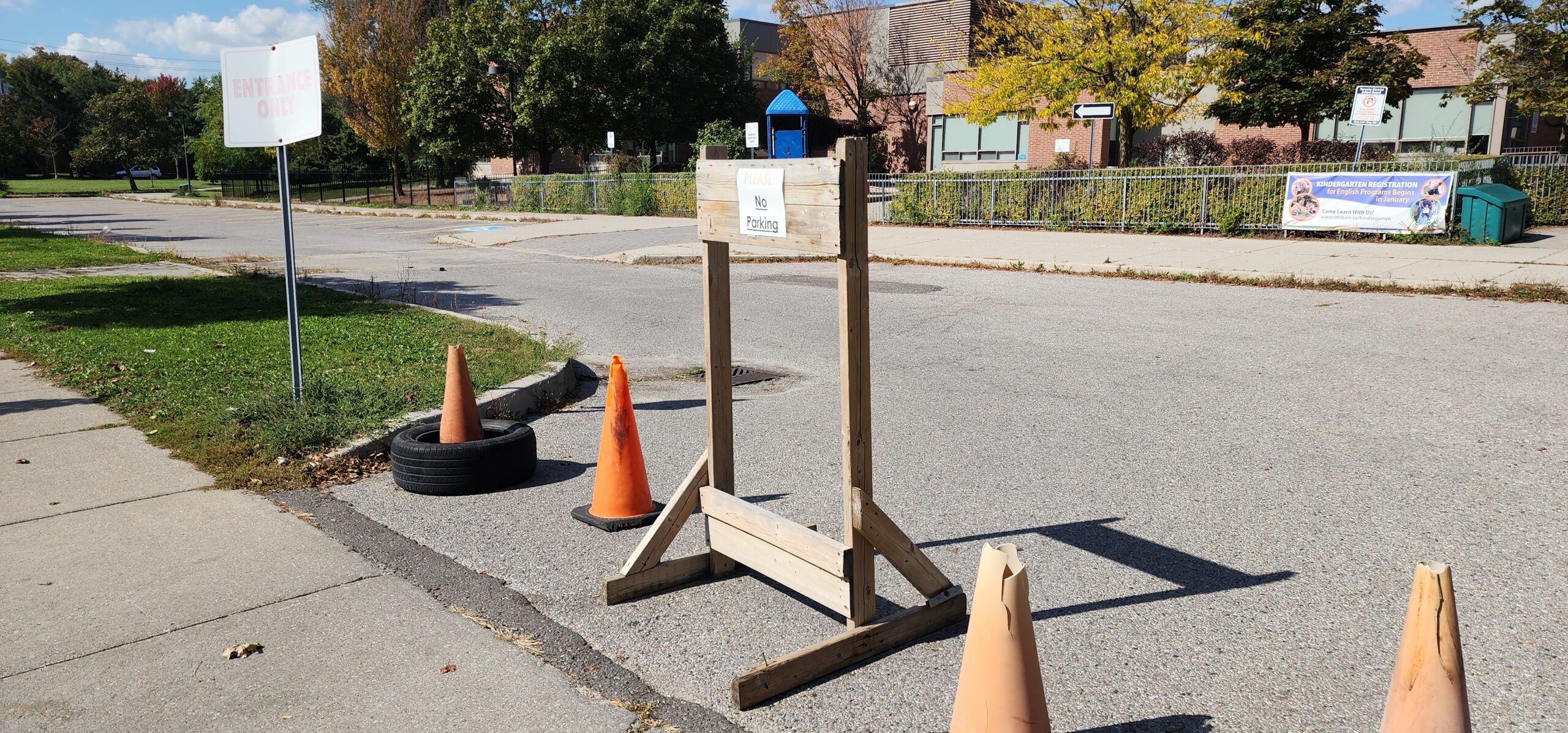
Listen to the whole story here:
A tragic accident at a Richmond Hill daycare last month has prompted the Ontario Ministry of Education to roll out new safety measures — but the rapid response is raising concerns among childcare providers and safety experts.
According to the minister’s spokesperson, Emma Testani, “… operators have been directed to close parking spaces that pose a risk to children’s safety, with the exception of accessible spaces.”
But one childcare provider says the one-size-fits-all parking ban was rushed out with no consultation and could even create new safety risks.
“Legislation should be developed with meaningful consultation, right? It can’t just be a knee-jerk reaction to a single accident,” said Amy O’Neil, chair of the Toronto Community for Better Childcare, part of the Ontario Coalition for Better Child Care, a provincial advocacy organization representing parents, early childhood educators and childcare providers.
According to Testani, “These closures are temporary and will remain in place until protective barriers such as bollards, planters or other safety measures are installed.”
Childcare Centres Scramble With New Rules
O’Neil’s centre initially tried complying by blocking off its small parking area next to the playground, but families were not happy.
“Parents were really upset, because it was more dangerous for them to park elsewhere – with a baby in a car seat, a toddler and a school-aged child right in the middle of traffic – than it was if they were just to park right beside the playground,” O’Neil said, “It was actually more dangerous.”
After a few days, she said her board stopped barricading the spot. “We voted that it’s safer just to keep the cars parked where they are than to block the parking area.”
So far, there has been no pushback from authorities – the directive hasn’t been written into law, and inspectors are not yet enforcing it. O’Neil said the province offered little guidance on how to implement the rule.
Communication from the province was another issue. O’Neil said when centres sought guidance, responses were slow. An automated reply to her inquiry said it could take 15 days to get an answer, and when ministry staff finally responded, they simply told her to use her own discretion.
That lack of clarity has left many operators in limbo with no timeline for installing permanent safety barriers.
Beyond the immediate confusion, O’Neil worries the new mandates could carry heavy financial costs that aren’t being covered by the government.
“To implement any safety measures is going to cost a lot of money, and that money has to come from somewhere,” O’Neil said.
“If it’s coming from our existing budget, it means we’re going to end up spending less on programming and what’s necessary to care for the kids, so the quality of care would suffer.”
Without financial help, O’Neil said centres might have to cut services or eventually pass costs to parents.
In an emailed statement to OTR, Testani said, “[The ministry is] also exploring options to support operators, as well as ensuring they do not face obstacles with landlords and municipalities to install appropriate safety barriers.”
Experts Urge Design Changes Over Quick Fixes
According to a safety advocate, keeping vehicles away from school entrances can reduce risk, but without proper street design, the danger could simply move elsewhere.
“Keeping vehicles away from school and daycare doors reduces the most dangerous mix of cars and kids, but it only works if the surrounding streets are designed to handle families safely,” said Lewis Smith, manager of national projects at the Canada Safety Council, a non-profit focused on safety education.
If families are forced to park farther away on streets without safe sidewalks or crossings, the danger might just be pushed elsewhere, especially for those with strollers or disabilities, according to Smith.
Rather than ad-hoc parking bans, Smith argues for comprehensive, long-term safety solutions. Lower speed limits and re-engineered streets around child-care centres top the list.
“The most effective approach involves designing the environment for safety – things like wide, clear sidewalks, well-marked drop-off loops, and reduced speed zones,” Smith said.
Physical traffic-calming features such as speed humps or raised crosswalks force drivers to slow down near play areas, said Smith, and these improvements have proven to calm traffic and prevent close calls.
Smith stresses that the government shouldn’t leave centres to figure this out alone. She said officials need to set clear standards and provide funds so daycare operators aren’t left “guessing or improvising” safety solutions on their own.
O’Neil agreed, saying that any new rules must come with support, otherwise, “it doesn’t make sense to introduce legislation.”
OTR reached out to the minister’s office for further comments and did not receive a response in time for publication.
This article was created with the use of OtterAI for transcription.

